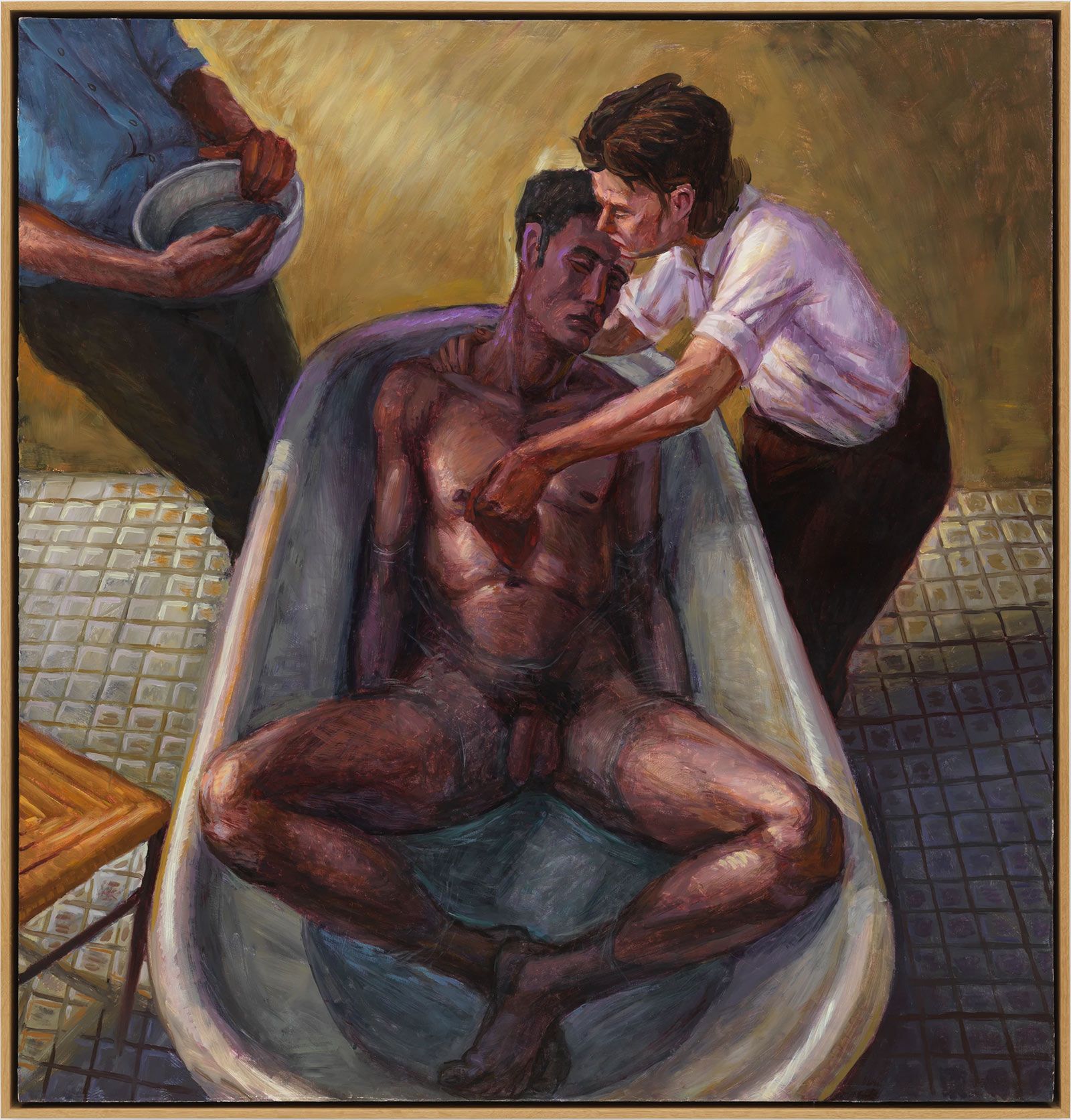
Hugh Steers
Two Men and a Woman
Oil on canvas
152.4 x 144.78 cm
1992
The much too short career of the American artist Hugh Steers (1962-1995) evolved around the issues of the AIDS crisis. The highly talented Steers became the chronicler of this dark period in American history, at first unintentionally, by painting his friends in intimate situations that also happened to involve coping with the disease. Later, when he was diagnosed with AIDS himself in 1987, he painted these scenes purposefully – on the one hand, as an act of social protest against the society that didn’t want to see the pandemic and, on the other, as a declaration of love for his beloved.
Steers painted using many references to art history, especially the 19th-century French Nabis movement: he hinted at Pierre Bonnard’s persons in a bathtub, or Vuillard’s complex interior scenes, making them, however, completely his own with his virtuoso brushstrokes and paint layers. Another important reference for Steers was Christian iconography – think about Christ’s entombment when you look at Two Men and A Woman (1992). The artist has enjoyed a lot of international attention in recent years, also from the new generation of artists who have acknowledged his legacy, talent, and courage.